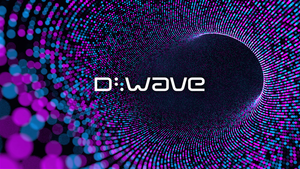But while availability, lead times, and pricing may feel ‘just right’ for many, ongoing inflation, demand variability, and industry fragmentation signal that new challenges will arise in 2024
New market intelligence from Supplyframe Commodity IQ indicates that the electronics supply chain has entered the Goldilocks Zone for buyers. That means the climate is neither too hot nor too cold but largely habitable. Yet despite the moderation and, in some instances, resolution of supply chain issues in 2023, new challenges loom for 2024 as asymmetrical demand elasticities, like the slackening of automotive and the stiffening of mobile component needs, and related supply constraints spur rising prices and expanding lead times.
“In a world in which inflation normalization is not anticipated before 2025 for most economies, electronic component demand is variable, and raw material and electronics production are increasingly fragmenting, contextual analysis of the current state and forward-looking views of the electronics supply chain are perpetual necessities,” said Steve Flagg, CEO and founder of Supplyframe, which invented Supplyframe Commodity IQ, a unique combination of analytics and analysis that delivers predictive and prescriptive intelligence for the electronics industry.
Largely stable lead times and prices are providing buyers with a good level of comfort
Following 29 consecutive months of expansion, the Commodity IQ Lead Time Index for electronic components fell below the index baseline, indicating contraction and stabilization. Just 10% of components will experience lead time increases in Q4 and 63% will be stable. Through H1 2024, nearly 80% of all component lead time dimensions are projected to be stable.
At the same time, inventories of electronic components are normalizing. Moves by major memory suppliers to slash production output have impacted inventory digestion, and excess inventory declines have become more broad-based in recent months.
Commodity pricing through Q4 definitely favors the buy-side, with almost three-quarters of component price dimensions either declining (48%) or stabilizing (25%). The forecast for H1 2024 electronic components shows just 4% of price dimensions on the rise, as component manufacturers mostly prefer capacity utilization modulation over price reductions in this environment.
For the materials and operations indirect sourcing segments, including batteries, metals, logistics, and labor, 80% and 58% of commodity pricing into H1 2024 will be stable, respectively.
But rising prices and supply constraints for memory components are coming soon
Memory components – specifically, NAND flash and DDR4, DDR5, and (high-bandwidth memory) HBM – will be the price and availability outliers in Q4 2023 and through most of H1 2024.
With the DRAM market reaching its bottom, overall memory revenue growth is projected to rise by as much as 40% in 2024. DDR4 pricing and lead times are also poised to increase as producers and consumers pivot toward DDR5, and the impacts of 2023 capacity cuts truly take hold.
DDR4 DRAM price flexibility is still available for hard orders. But that won’t last beyond Q2 2024. With DDR5, which already has more than 25% PC penetration, ready to dominate, both DDR4 and DDR5 will see supply constraints in 2024, persisting into 2025.
Current shortages of HBM will expand in 2024 to an undersupply of about 15%, with a supply-demand balance unlikely to be achieved for up to three years afterward. HBM leader SK Hynix on its fiscal Q3 earnings call in late October hinted at fully committed HBM capacity for 2024 and 2025.
Key memory technologies will challenge procurement organizations for years to come as memory content of smartphones and automobiles continues to multiply and memory requirements for storage and AI data center applications see explosive growth into 2025.
No matter the time of year, change remains a constant for the electronics supply chain
Demand trends also conform to the Goldilocks scenario, with sales increases in some areas like PCs and smartphones counterbalanced by declines or slowing growth in other applications like servers, preventing the electronic component market from overheating.
Component demand from the formerly red-hot automotive sector has cooled. Automotive chip suppliers have indicated they are decreasing their capacity utilization to adjust to the slowdown. EV sales growth is falling short of industry expectations into 2024, mitigating demand increases for the entire automotive market.
Despite uneven demand and global economic improvement being negatively skewed, the semiconductor and some passive component markets are poised for growth in 2024. According to the latest data from World Semiconductor Trade Statistics (WSTS), IC billings month-on-month in September rose across all regions markedly and even inched up worldwide a fraction of a percent over last year, while European semiconductor billings grew by 16% year-over-year.
“Any abrupt and concentrated end-market demand increases will yield component availability issues – and that’s a real possibility with some supply chain participants forecasting four-fold growth in AI-related businesses and the aerospace & defense component market set for a strong first half in 2024. Those factors combined with low production rates and an upward trend in the Commodity IQ Design Index, may lead to supply constraints beyond memory ICs in 2024,” said Dory Meynert, senior director of market development at Supplyframe.
“Variation in lead times, pricing, and demand by region and sector; innovation cycles; economic and geopolitical forces; and other factors increase risk for manufacturers and suppliers,” said Richard Barnett, chief marketing officer and SaaS sales leader at Supplyframe. “Building resilience to exposure from electronics supply risk requires organizational change and empowerment; collaboration with key suppliers; and new forms of intelligence and visibility.”
Supplyframe Commodity IQ delivers such intelligence and is underpinned by massive in-market engagement that fuels billions of data signals and is informed by more than $160 billion in annual spending and more than 500 Design-to-Source Intelligence (DSI) Network partners. Paired with other DSI SaaS offerings that include buy and supply-side workflow solutions, Commodity IQ augments enterprise data with previously unavailable, independent market-in-comparison views to identify risks and rewards in advance to help businesses make the right tradeoffs.
About Supplyframe
Supplyframe’s unmatched industry ecosystem, and pioneering Design-to-Source Intelligence (DSI) Solutions, are transforming how people and businesses design, source, market, and sell products across the global electronics value chain. Leveraging billions of continuous signals of design intent, demand, supply, and risk factors, Supplyframe’s DSI Platform is the world’s richest intelligence resource for the electronics industry. Over 12 million engineering and supply chain professionals worldwide engage with our SaaS solutions, search engines, and media properties to power rapid innovation and optimize in excess of $160 billion in annual direct materials spend. Supplyframe is headquartered in Pasadena, Calif., with offices in Austin, Belgrade, Grenoble, Oxford, San Francisco, Shanghai, and Shenzhen. To join the Supplyframe community, visit supplyframe.com and follow us on LinkedIn, Twitter, Instagram, and YouTube.
View source version on businesswire.com: https://www.businesswire.com/news/home/20231130036638/en/
Contacts
Miranda Stanford
miranda@bospar.com
408-887-8486





